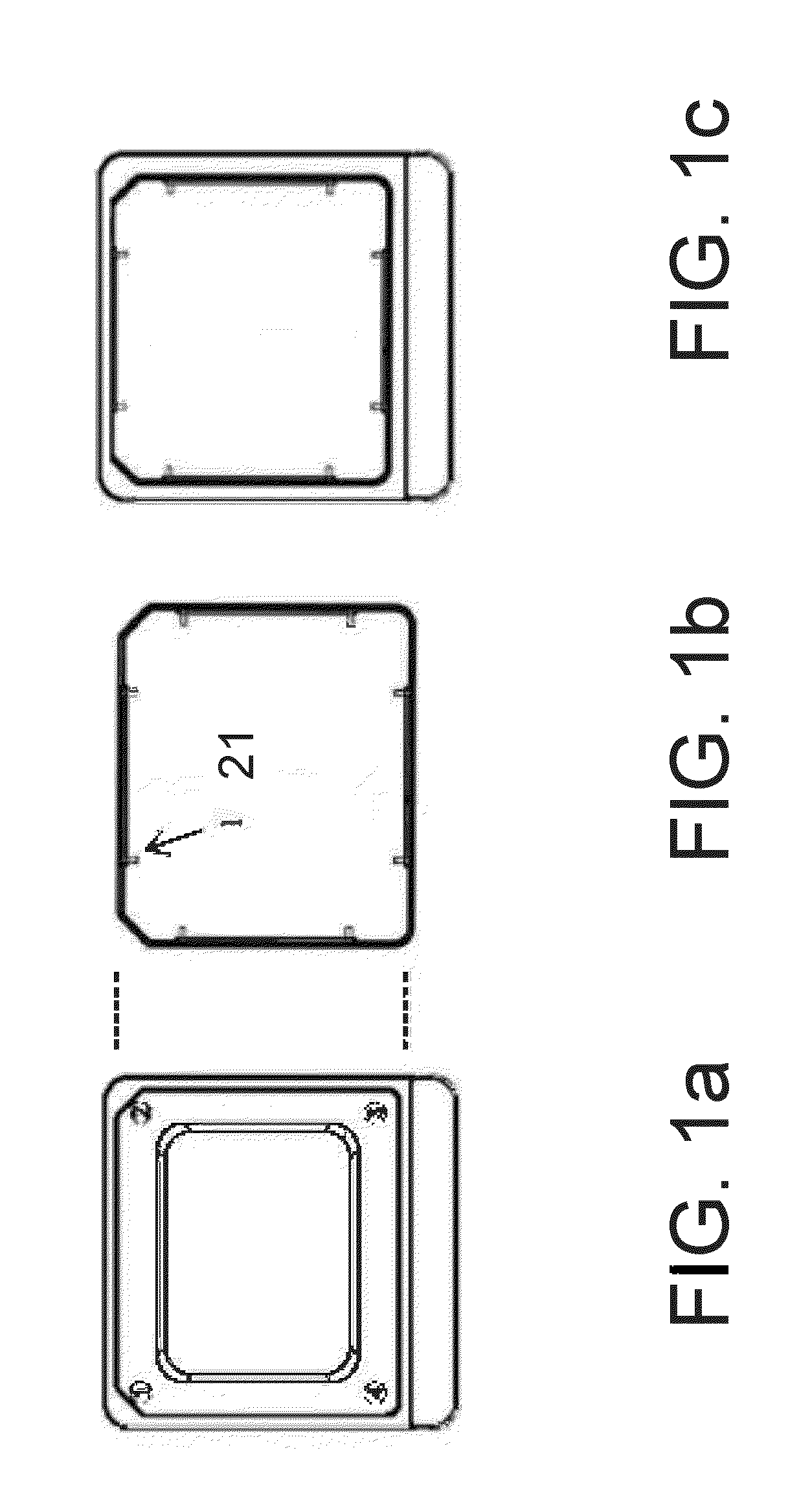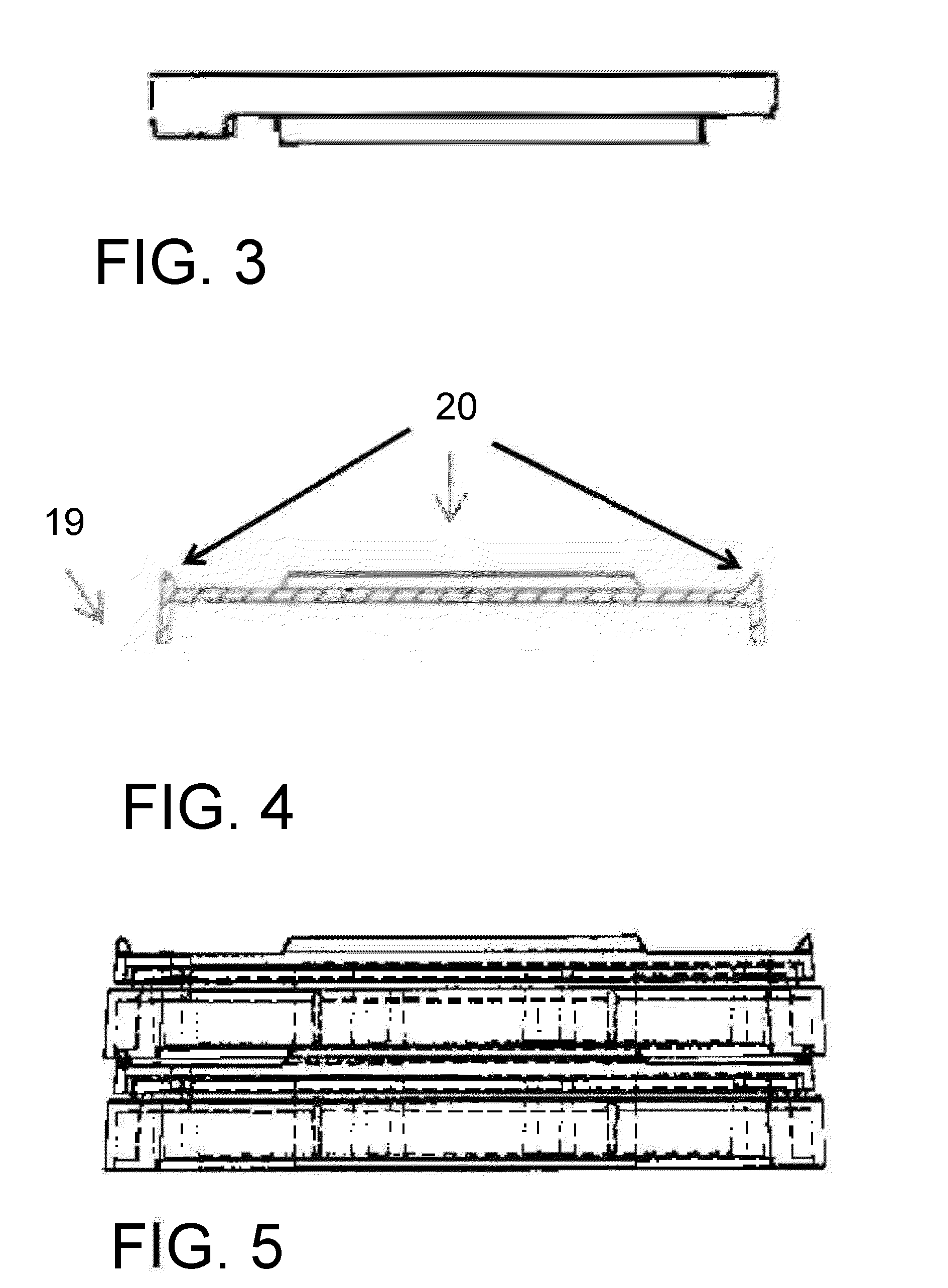Container for culturing, micro manipulation and identification of small specimens
a technology for culturing and micro-manipulation of small specimens, which is applied in the field of container for culturing and manipulating small specimens, can solve the problems of difficult control of temperature at the elevated bottom of generic dishes and plates on heated working surfaces, and the impact of scraping reduces the visibility of specimens during use, so as to improve the ability of transferring heat and improve the effect of temperature transfer
- Summary
- Abstract
- Description
- Claims
- Application Information
AI Technical Summary
Benefits of technology
Problems solved by technology
Method used
Image
Examples
examples
[0094]Polymer specimen container with open wall structure, flat bottom base in contact with working surface, area for identification, and optionally slope between wall structure of the well and bottom of the well
[0095]The polymer container of the present invention may have any suitable size for the intended use.
[0096]In particular polymer container being substantially square or square with rounded corners having a side length of 25 mm or less, such as 20 mm or less, 15 mm or less, 10 mm or less such as approximately 7.5 mm. A substantially square geometry is useful during microscopy using an XY stage moving the container in X- and Y directions.
[0097]In particular polymer container being substantially circular having a diameter of 120 mm or less, such as 90 mm or less, such as 60 mm or less, such as 50 mm or less, such as 40 mm or less. A substantially circular geometry is useful during microscopy rotating the container by hand.
[0098]In particular polymer container being substantiall...
experimental example
[0117]The following examples serve to more fully describe the functionality of the externally flat bottom in contact with external heated surface compared to traditional containers for IVF. These examples do not limit the scope of the disclosure, but rather are presented for illustrative purposes.
example 1
Temperature Transfer to Polymer Container
[0118]Two conventionally polymer containers with wells and a polymer container according to this invention are placed on a metal plate heated to 37.2 Degrees Celsius.
[0119]In FIG. 10 the two conventional polymer containers (B and C) have a bottom situated approx 0.5 mm above the heated plate surface. The container (A) according to this invention has full contact between the bottom of the container and the heated plate.
[0120]Each well is filled with liquid to obtain equal liquid height.
[0121]Allow 5 minutes for the heated plate to transfer heat to the containers.
[0122]Use a thermo sensitive camera to take an image of the heat distribution within the containers.
[0123]FIG. 10 illustrates the more optimal heat transfer from the heated plate to the liquid within the 5 well container (A) according to this example and this invention compared to commercially available 5 well (B) and 4 well (C) plates.
[0124]One conventionally polymer Petri dish and a ...
PUM
| Property | Measurement | Unit |
|---|---|---|
| angle | aaaaa | aaaaa |
| side length | aaaaa | aaaaa |
| diameter | aaaaa | aaaaa |
Abstract
Description
Claims
Application Information
 Login to View More
Login to View More - R&D
- Intellectual Property
- Life Sciences
- Materials
- Tech Scout
- Unparalleled Data Quality
- Higher Quality Content
- 60% Fewer Hallucinations
Browse by: Latest US Patents, China's latest patents, Technical Efficacy Thesaurus, Application Domain, Technology Topic, Popular Technical Reports.
© 2025 PatSnap. All rights reserved.Legal|Privacy policy|Modern Slavery Act Transparency Statement|Sitemap|About US| Contact US: help@patsnap.com



